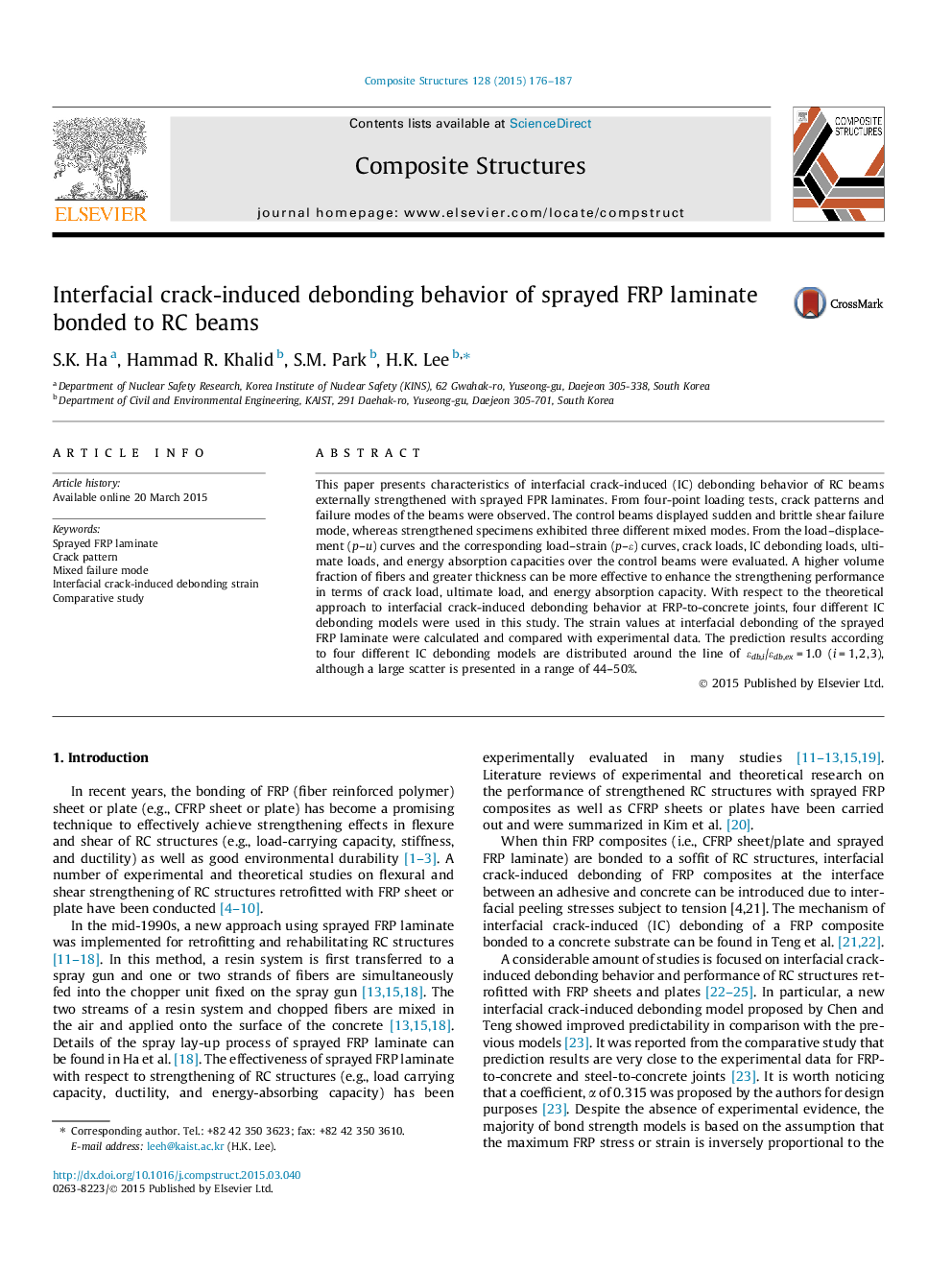| Article ID | Journal | Published Year | Pages | File Type |
|---|---|---|---|---|
| 251234 | Composite Structures | 2015 | 12 Pages |
This paper presents characteristics of interfacial crack-induced (IC) debonding behavior of RC beams externally strengthened with sprayed FPR laminates. From four-point loading tests, crack patterns and failure modes of the beams were observed. The control beams displayed sudden and brittle shear failure mode, whereas strengthened specimens exhibited three different mixed modes. From the load–displacement (p–u) curves and the corresponding load–strain (p–ɛ) curves, crack loads, IC debonding loads, ultimate loads, and energy absorption capacities over the control beams were evaluated. A higher volume fraction of fibers and greater thickness can be more effective to enhance the strengthening performance in terms of crack load, ultimate load, and energy absorption capacity. With respect to the theoretical approach to interfacial crack-induced debonding behavior at FRP-to-concrete joints, four different IC debonding models were used in this study. The strain values at interfacial debonding of the sprayed FRP laminate were calculated and compared with experimental data. The prediction results according to four different IC debonding models are distributed around the line of ɛdb,i/ɛdb,ex = 1.0 (i = 1, 2, 3), although a large scatter is presented in a range of 44–50%.
